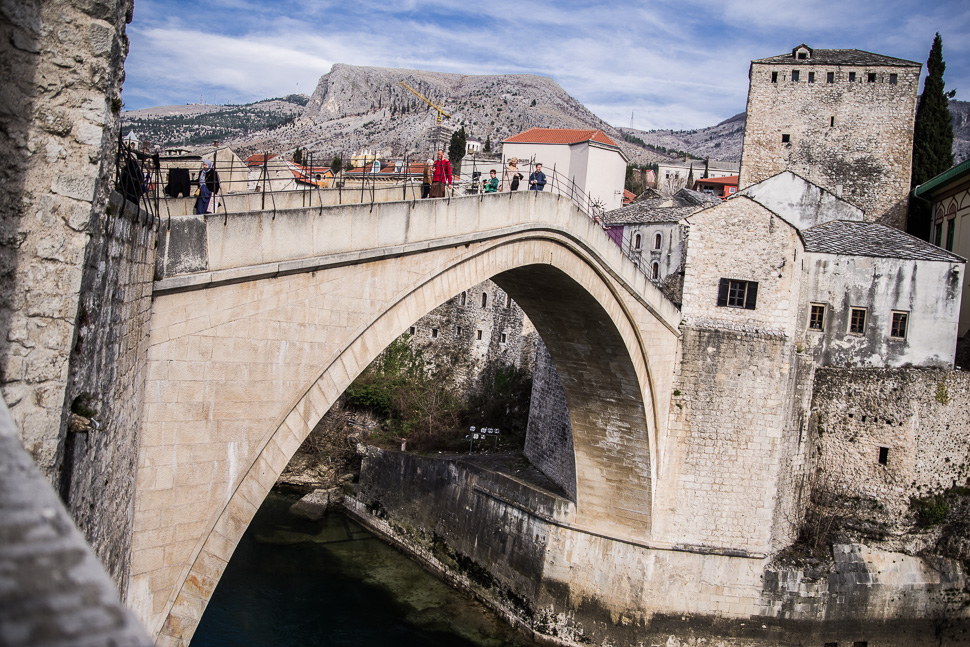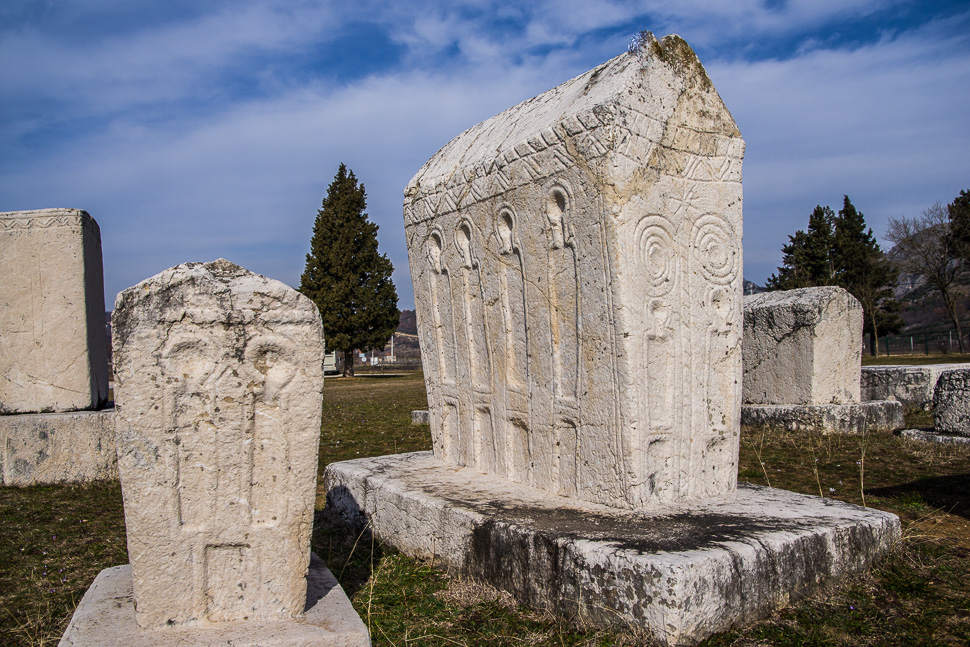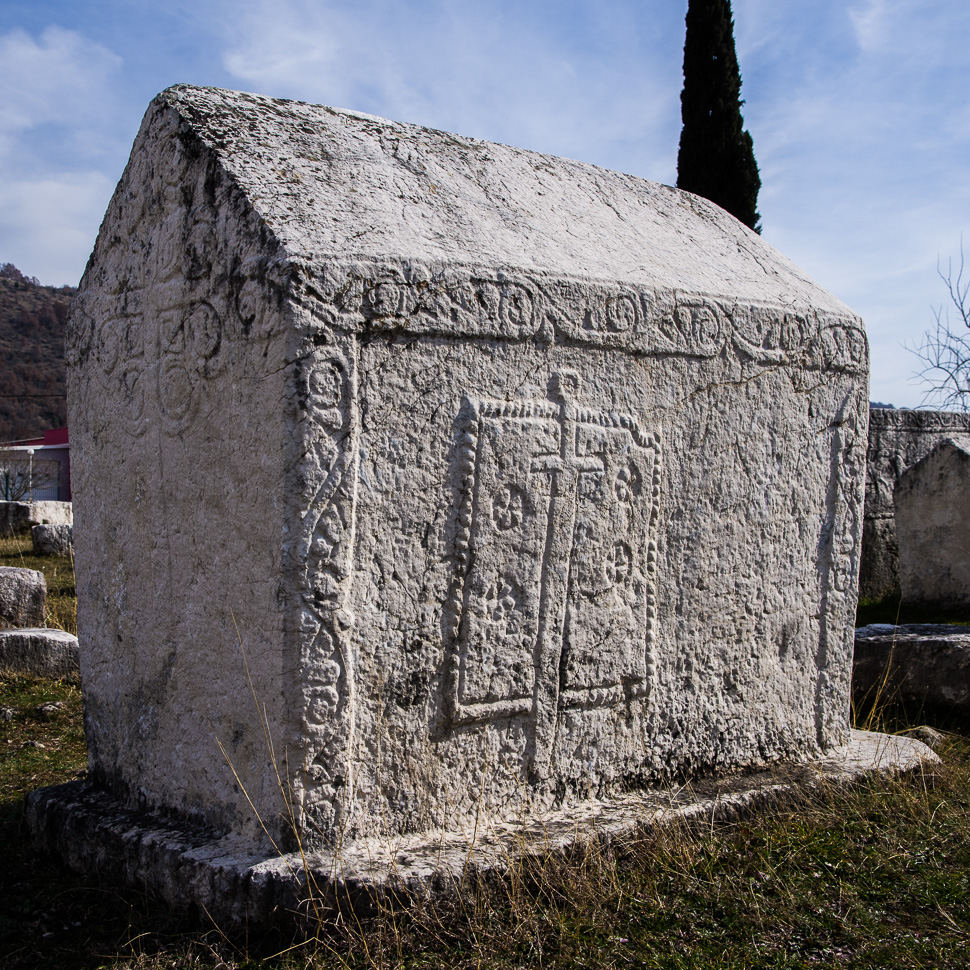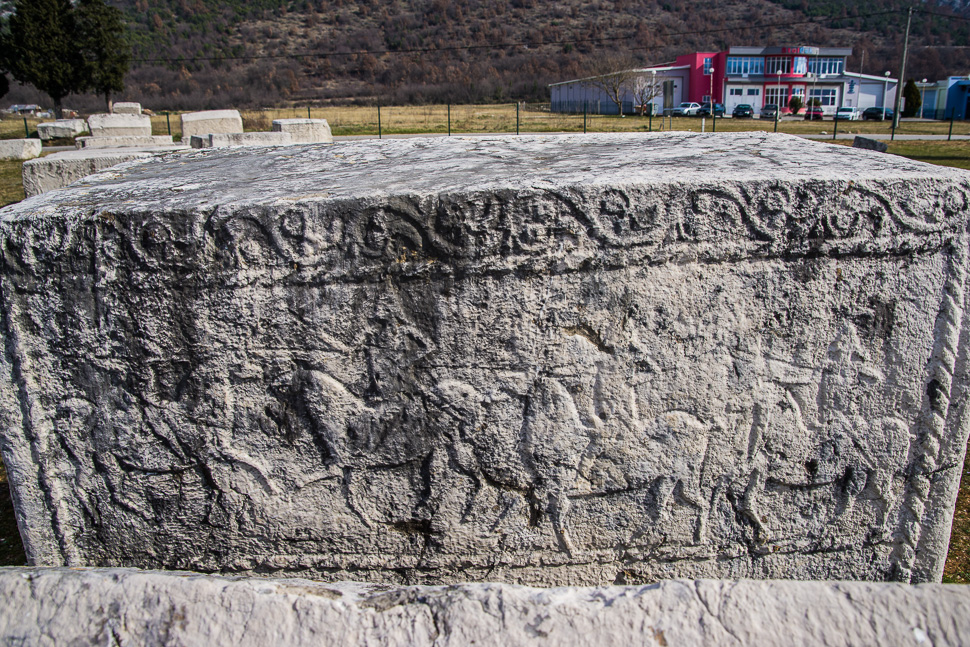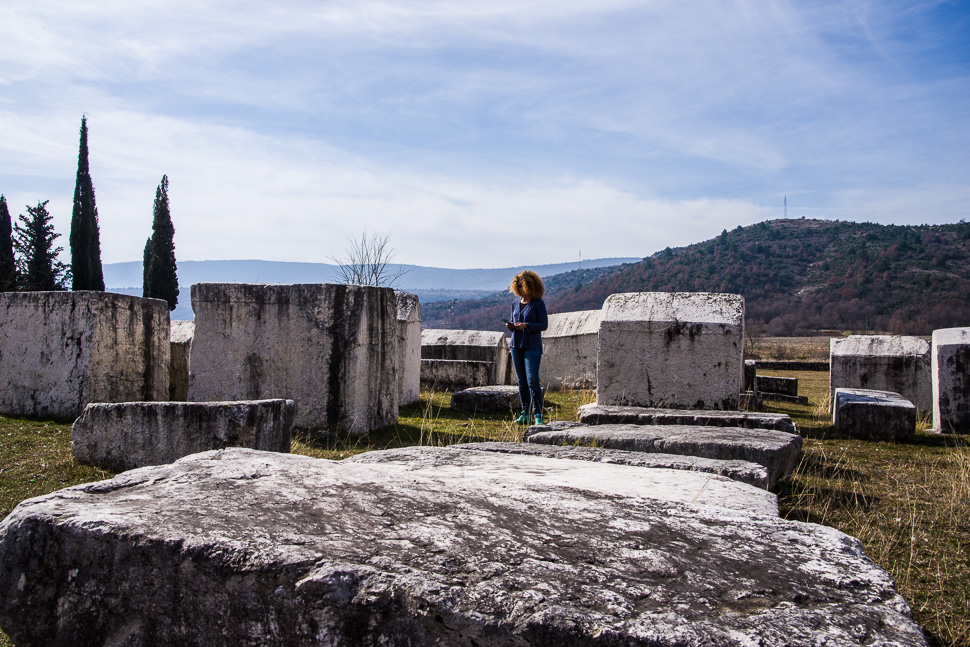From the coast we drove inland to visit Mostar with its famous bridge, but also a necropolis with medieval tomb stones and a Dervish monastery, the Blagaj tekke.
We had stopped for the night at the coast of Croatia, next to a church and cemetery from where we had a nice view and spent a very quiet night. (42.970553,17.509092) The next morning we left the coast and drove inland where we soon crossed the border into Bosnia and Herzegovina.
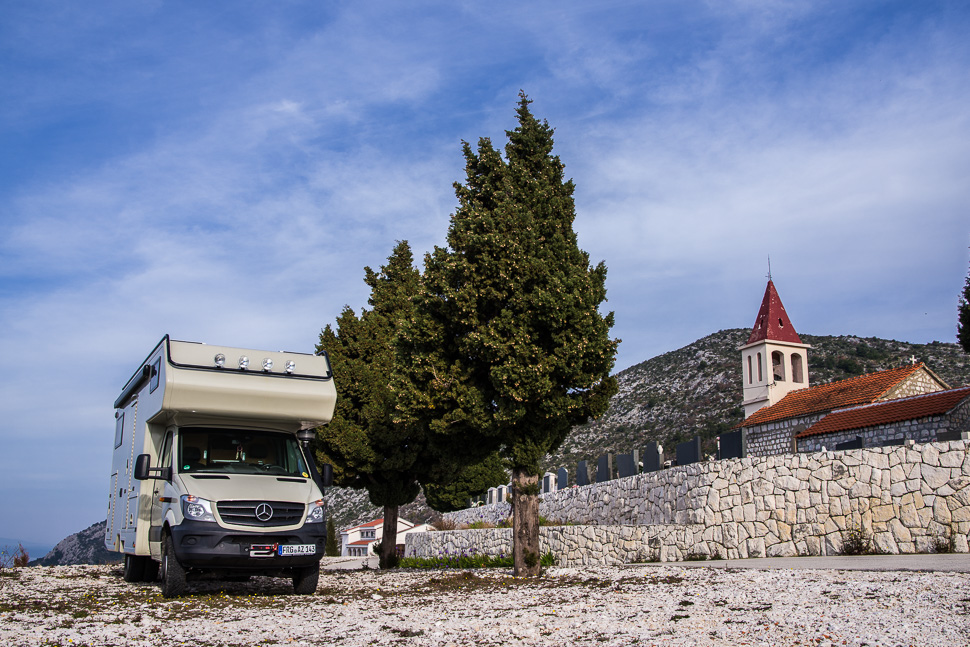 |
| Parking for the night |
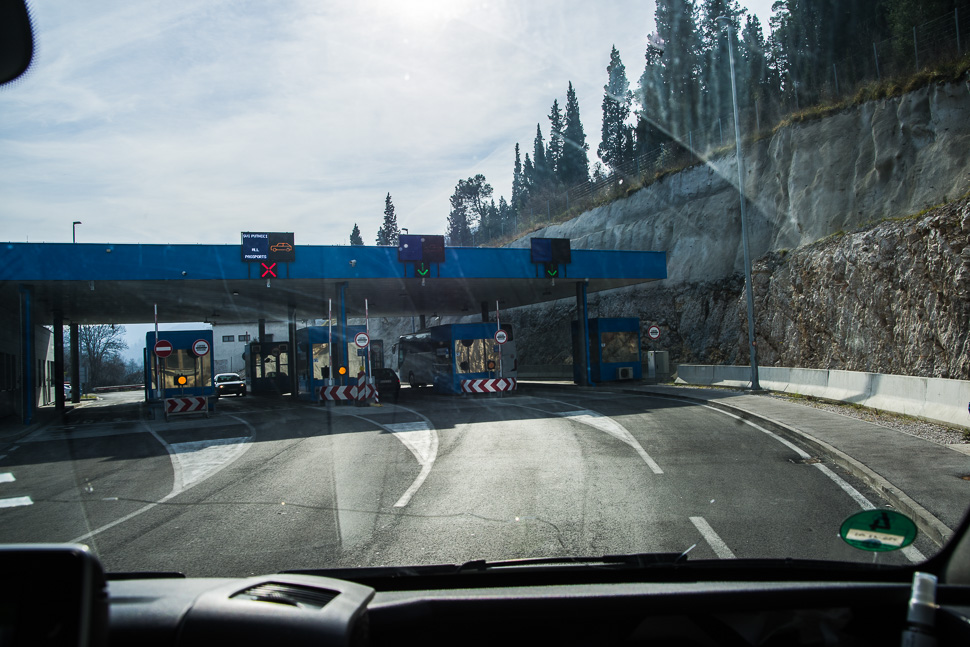 |
| Crossing the border into Bosnia and Herzegovina |
I had read that medieval tombstones called stećci in the area of Herzegovina are on the UNESCO World Heritage List and I found out that a good place to see some is at Radimlja. So we made another little detour from our detour.
The tombstones are from the 14th and 15th century with lovely ornaments, some with lines, rosettes or simple symbols, others with scenes of hunting or tournaments. Male figures with a raised hand and arrow and bow are connected to members of the ruling family. The stećci were made of limestone cut from Ošanići hill, trimmed and then moved to the necropolis for final work and ornamentation.
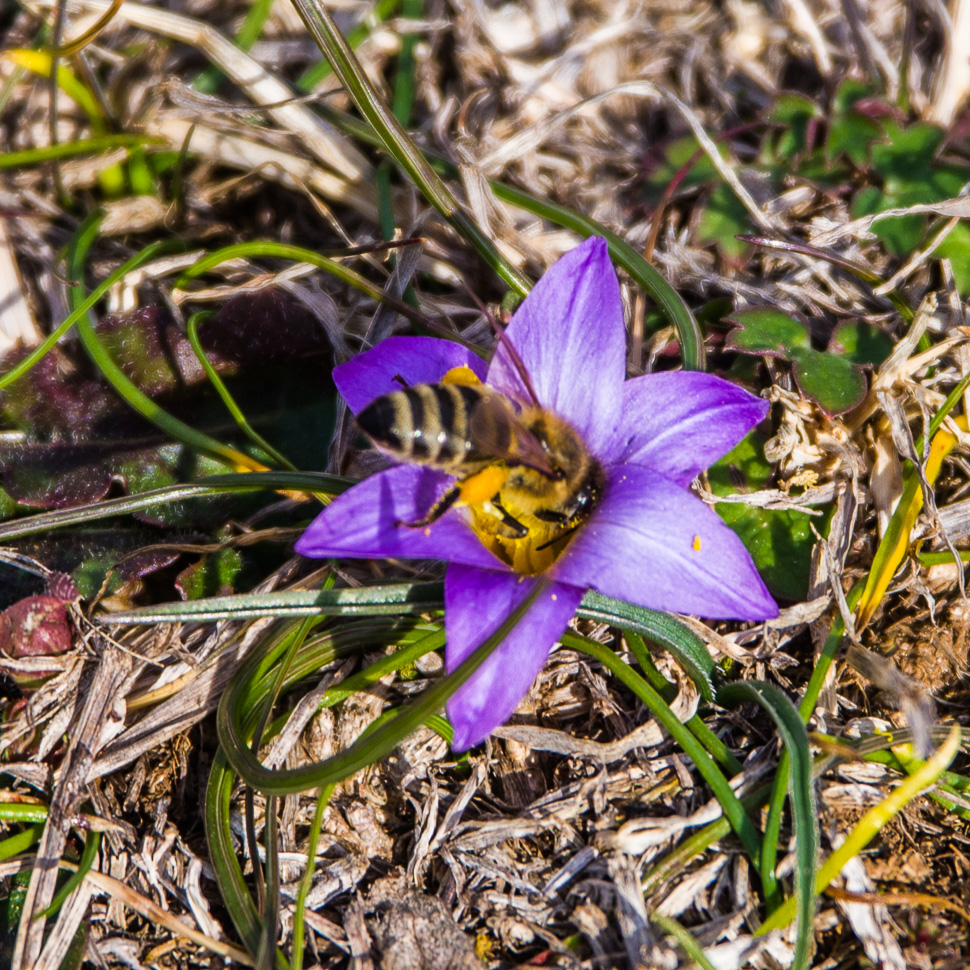 |
| Flower of the Day |
Our next detour was to Blagaj where a river emerges from a cliff and a famous tekke sits just underneath the rocks. On the way we could admire how the wind decorated the landscape with a lot of plastic which was left to fly around until it got caught by a bush or fence.
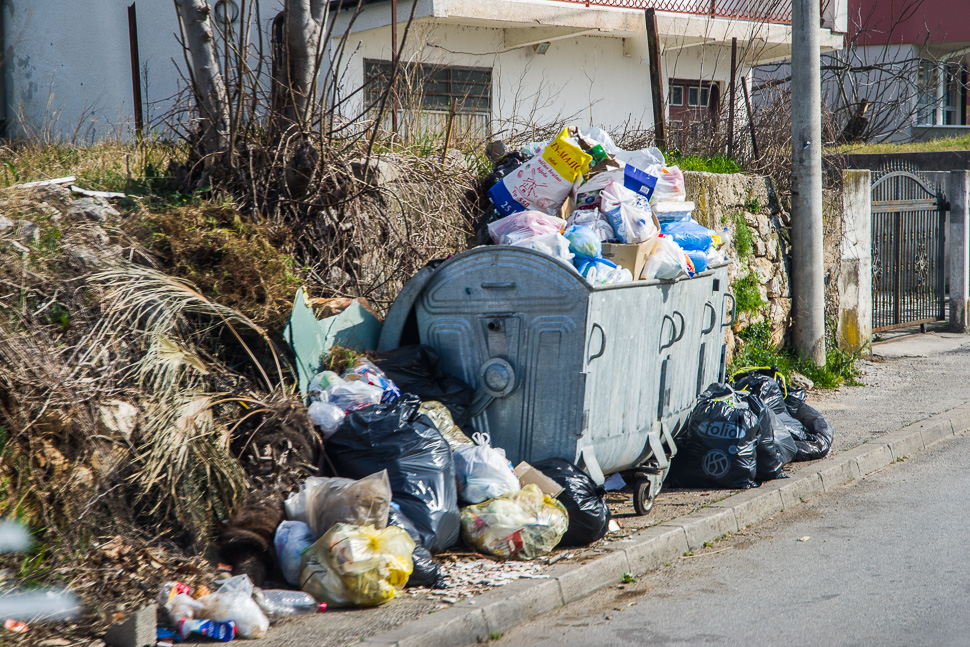 |
| Rubbish collection on strike ? |
Finally we reached Blagaj, which has a big parking from where we walked a little further up the river until we reached the dervish monastery.
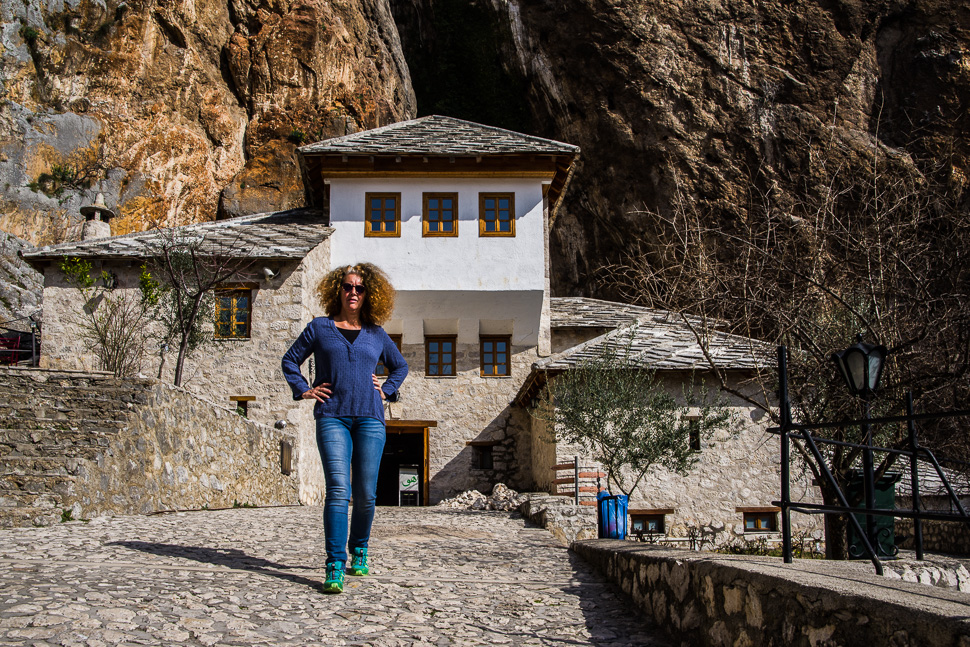 |
| Blagaj tekke |
The Blagaj Tekke was built very soon after Ottoman rule was established in Herzegovina, around about 1520. A tekke is a building designed specifically for gatherings of a Sufi brotherhood and is a place for spiritual retreat and character reformation. The buildings are tucked into the natural surroundings, next to the cliffs and the source of the Buna river. Some of the buildings have been preserved to this day.
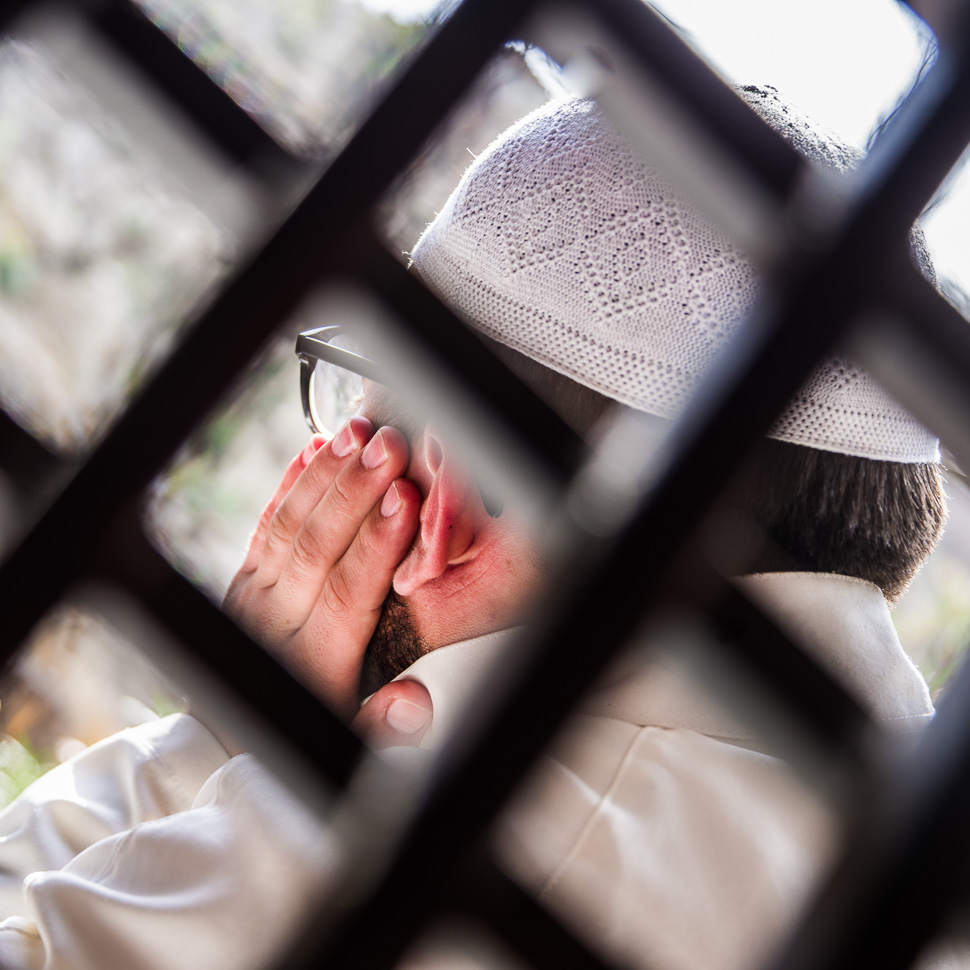 |
| Calling for prayer |
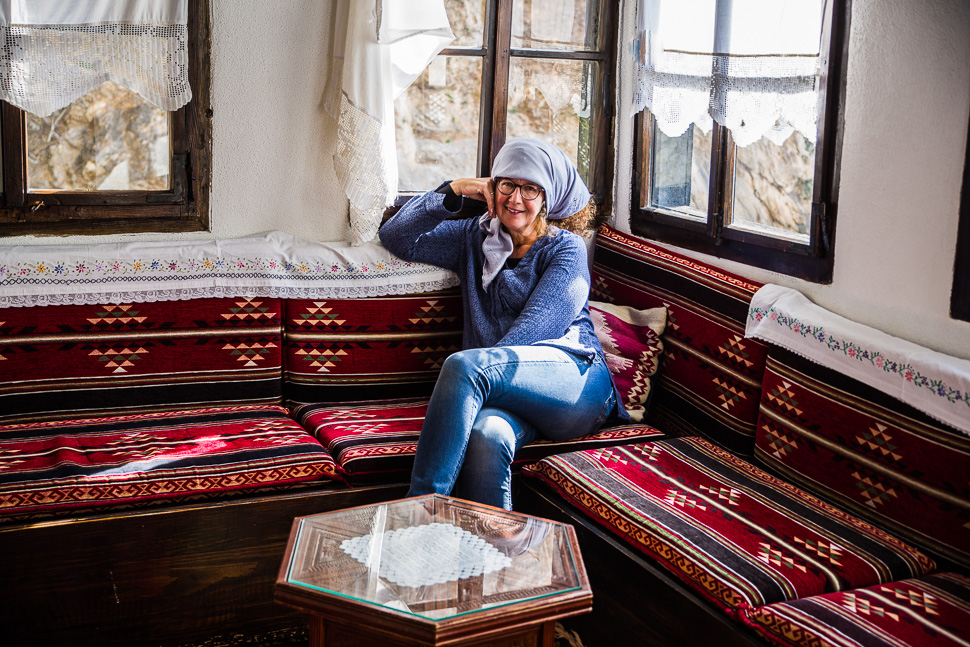 |
| A scarf was provided for female visitors |
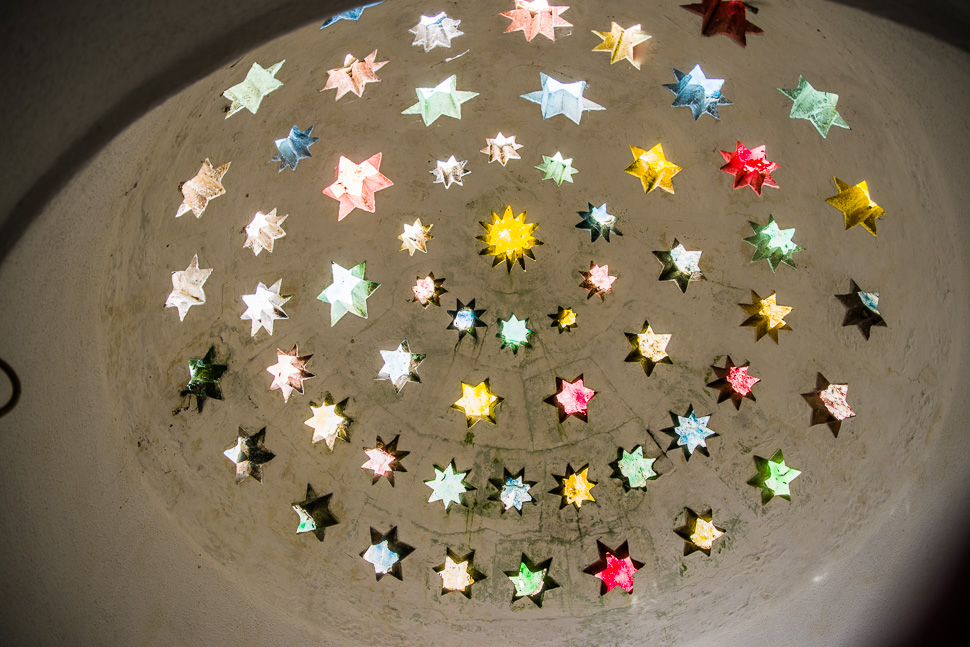 |
| Roof at the bath of the monastery |
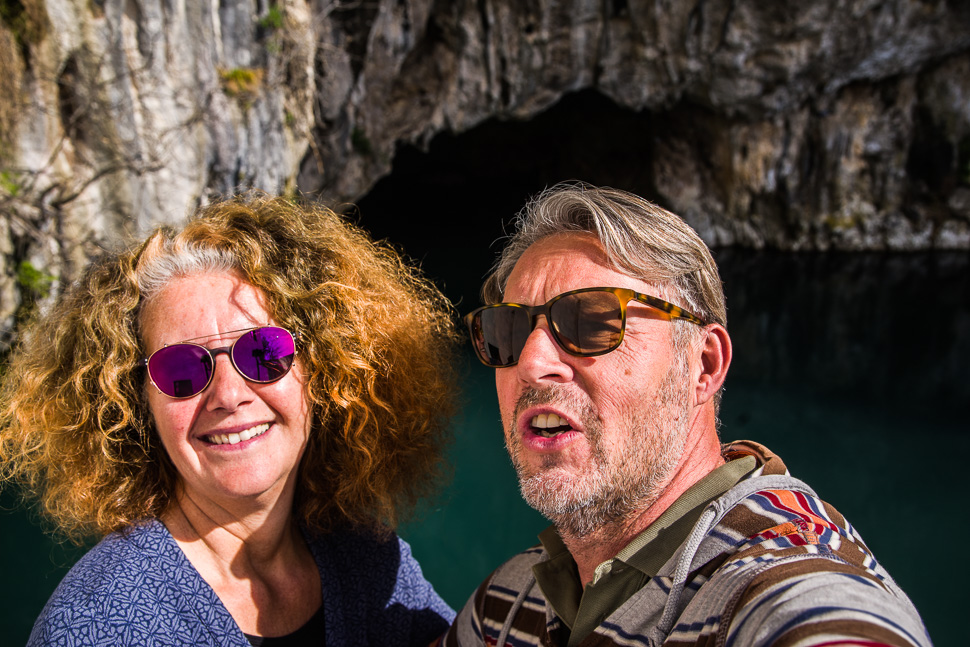 |
| The spring of the Buna river behind us |
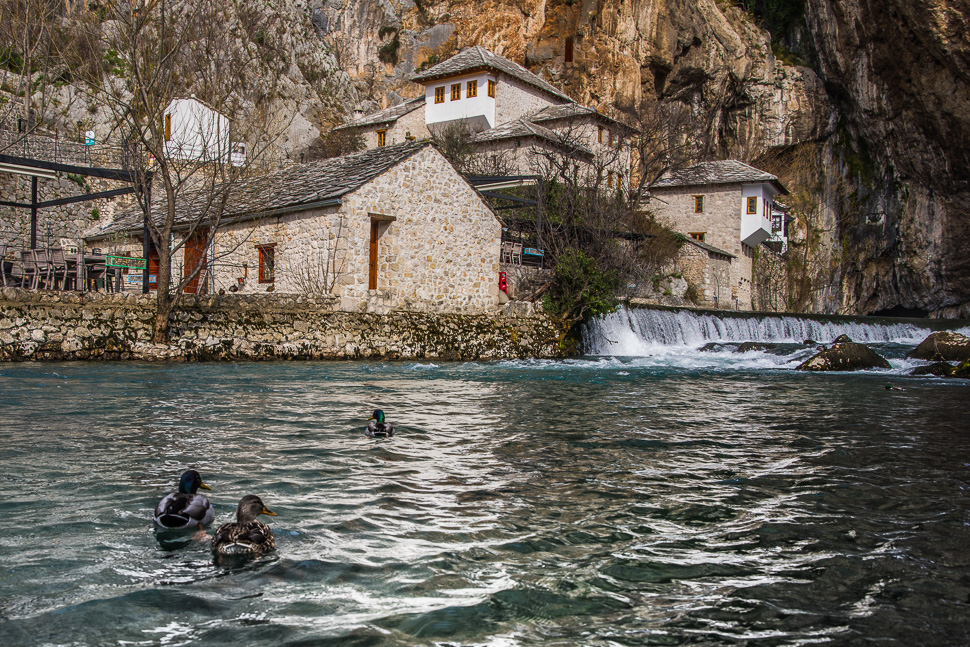 |
| Blagaj tekke from the other side of the river |
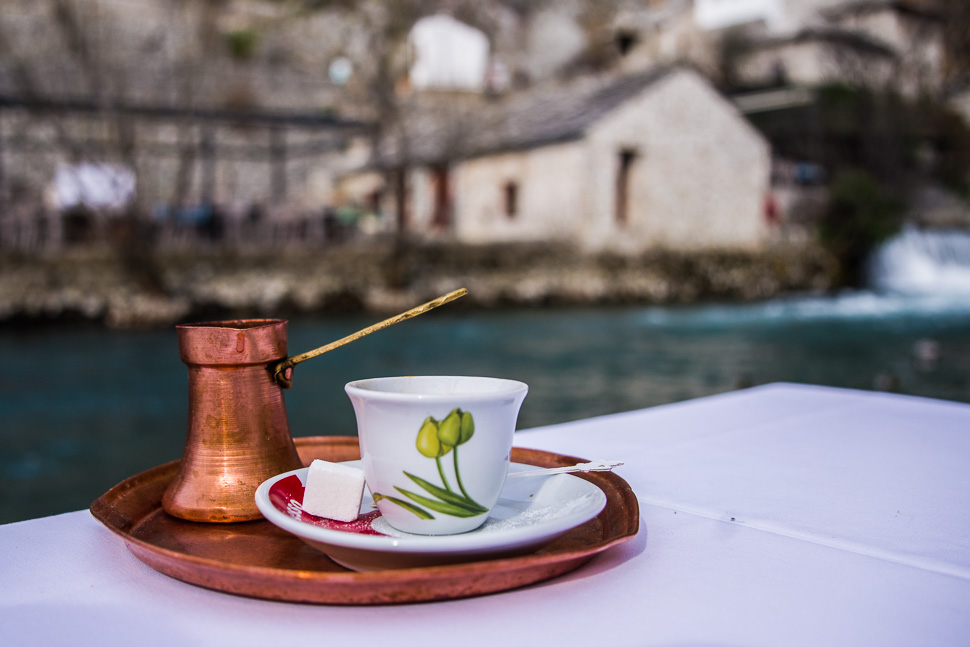 |
| Coffee at the river |
Finally we reached the main goal of our detour from the coast: Mostar. It is situated on the Neretva River and is the fifth-largest city of Bosnia-Herzegovina. Mostar was named after the bridge keepers (mostari) who in the medieval times guarded the Stari Most (Old Bridge) over the Neretva.
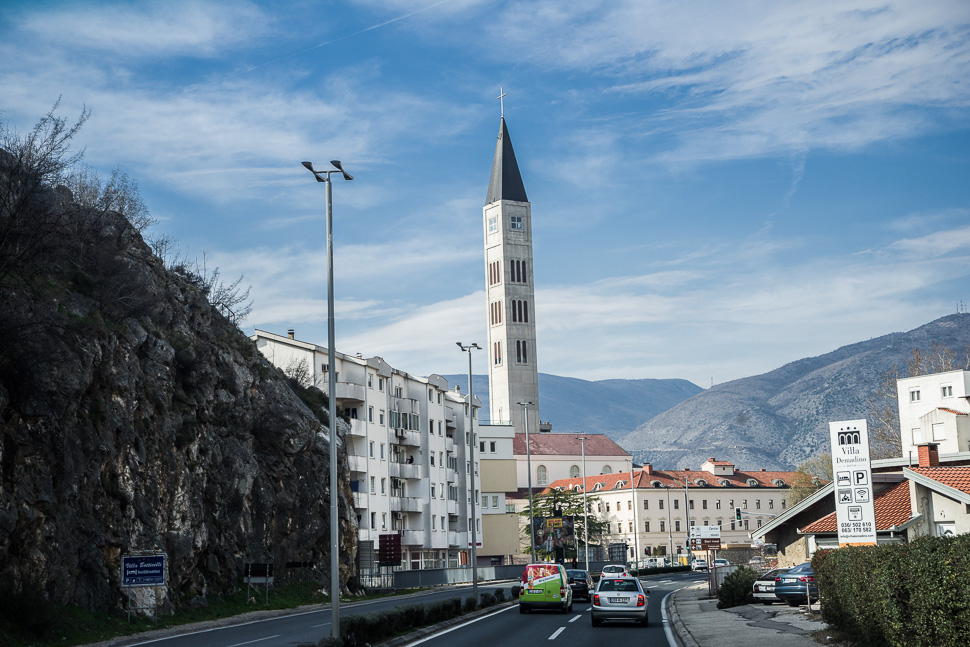 |
| Church tower seems to be a statement |
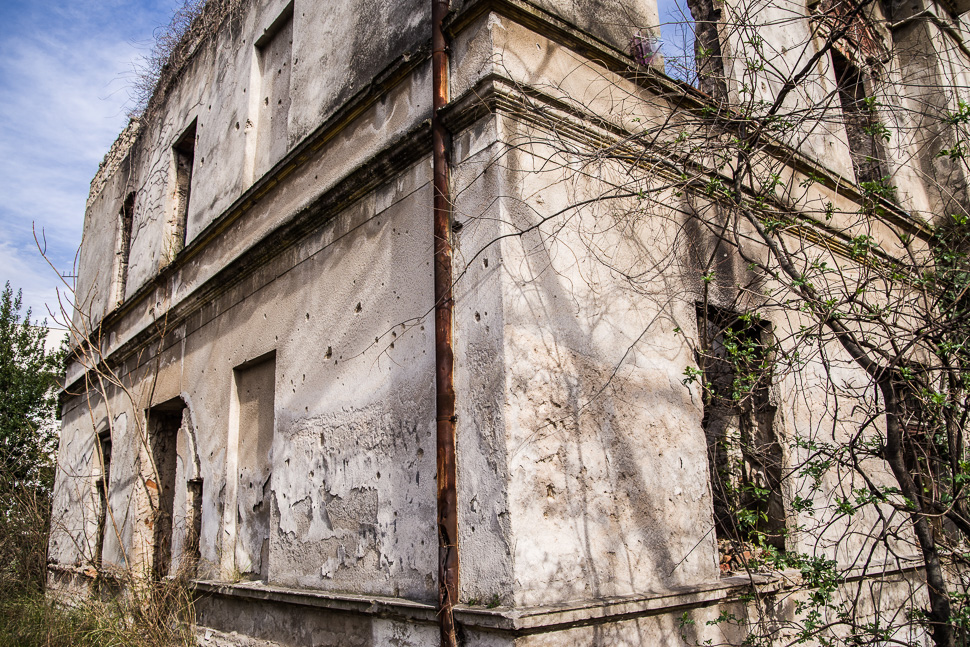 |
| Many houses have not been restored after the war |
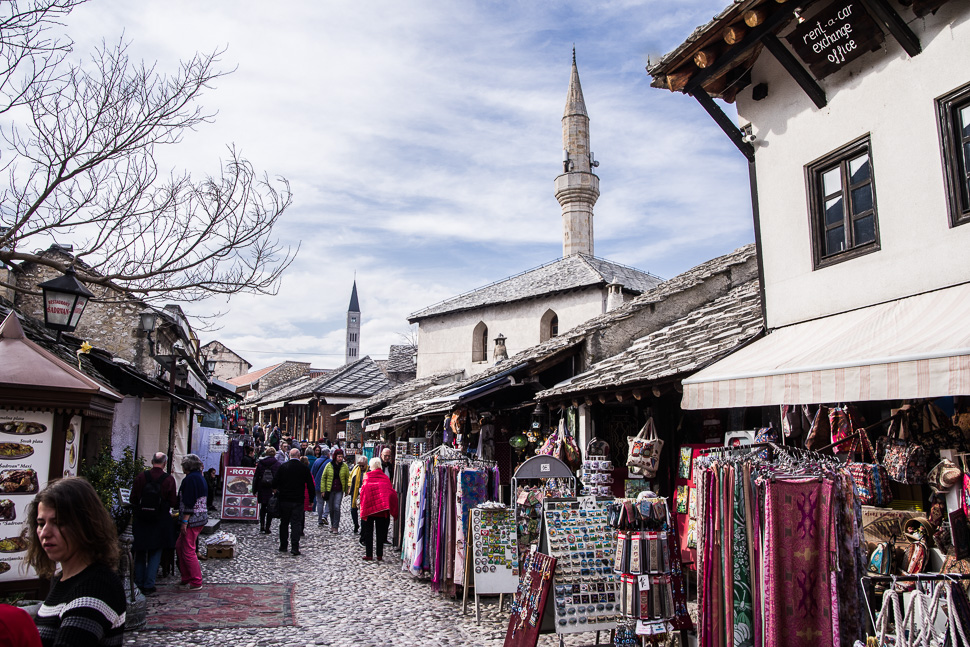 |
| Bazaar around the bridge |
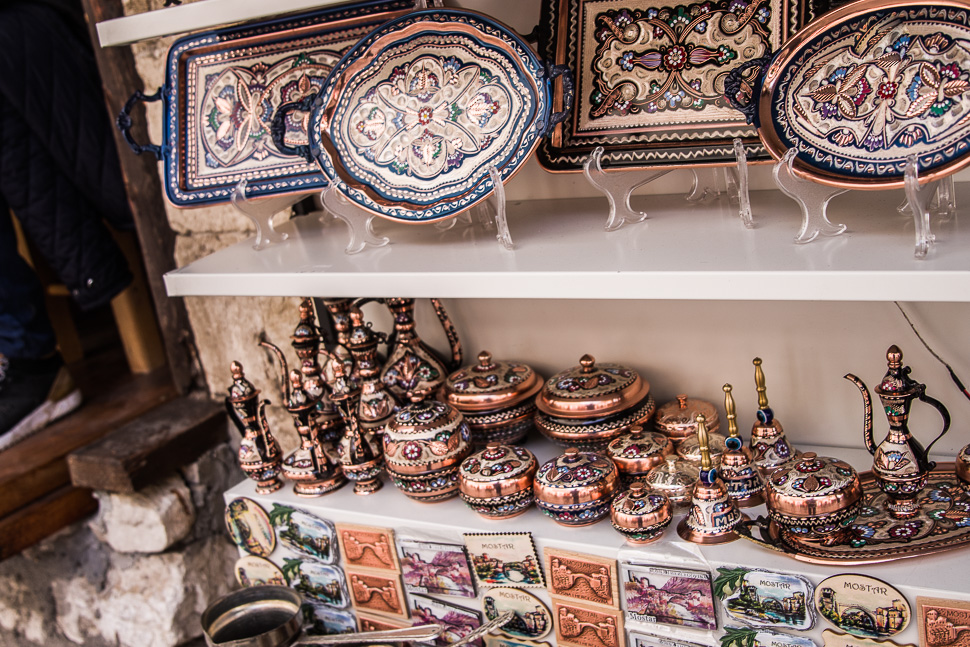 |
| Souvenirs made from copper |
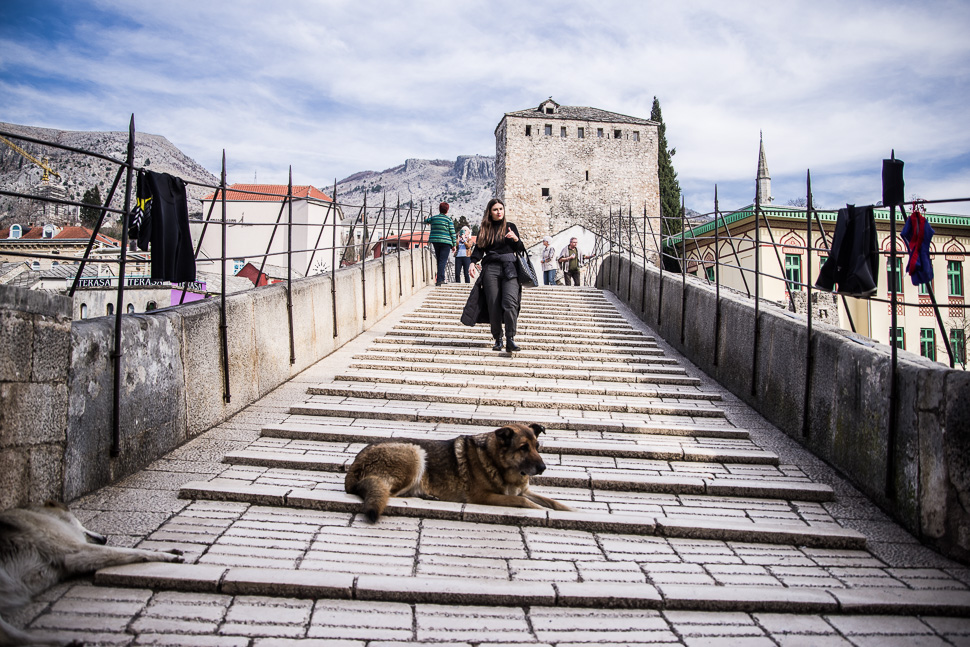 |
| Stari Most |
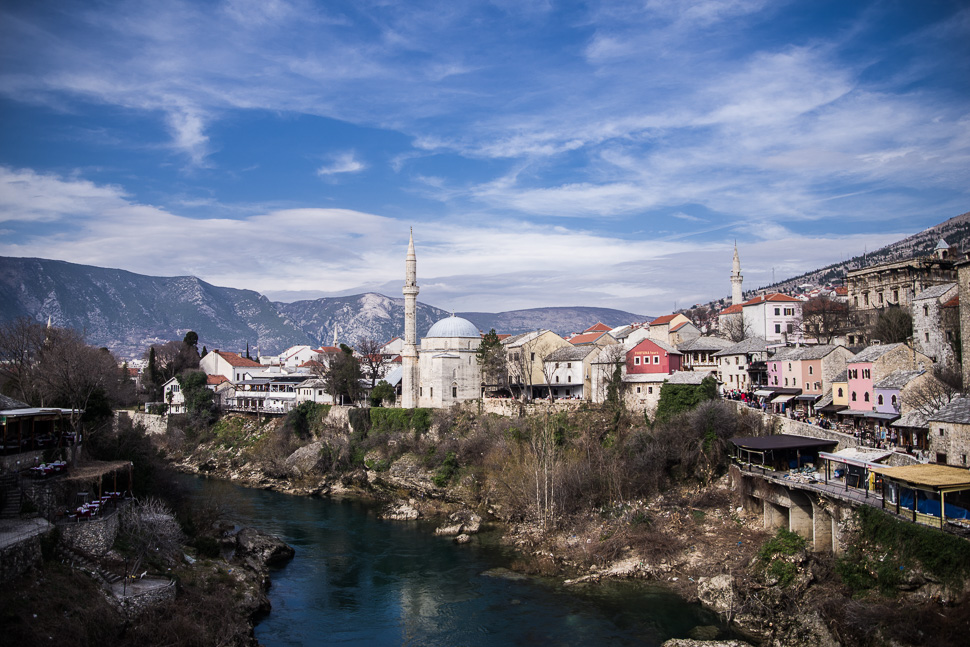 |
| Mosques on the other side of the river |
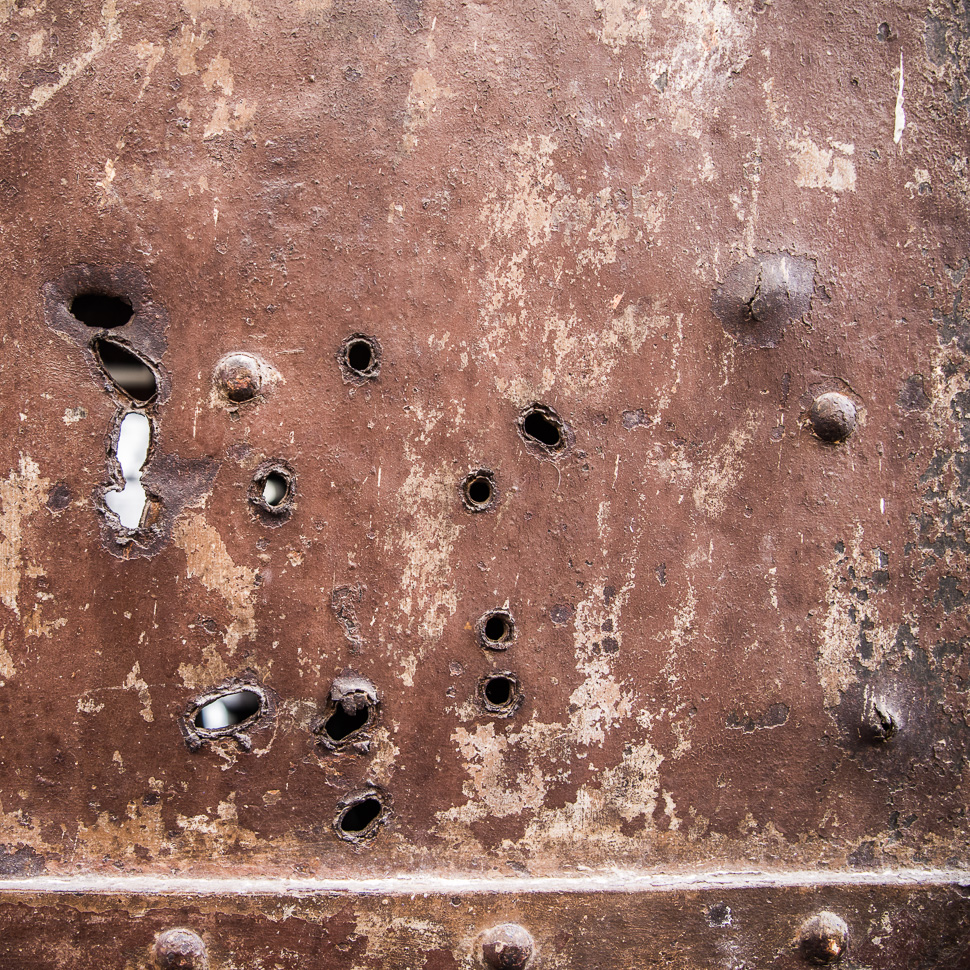 |
| Iron door at the bazaar telling the history |
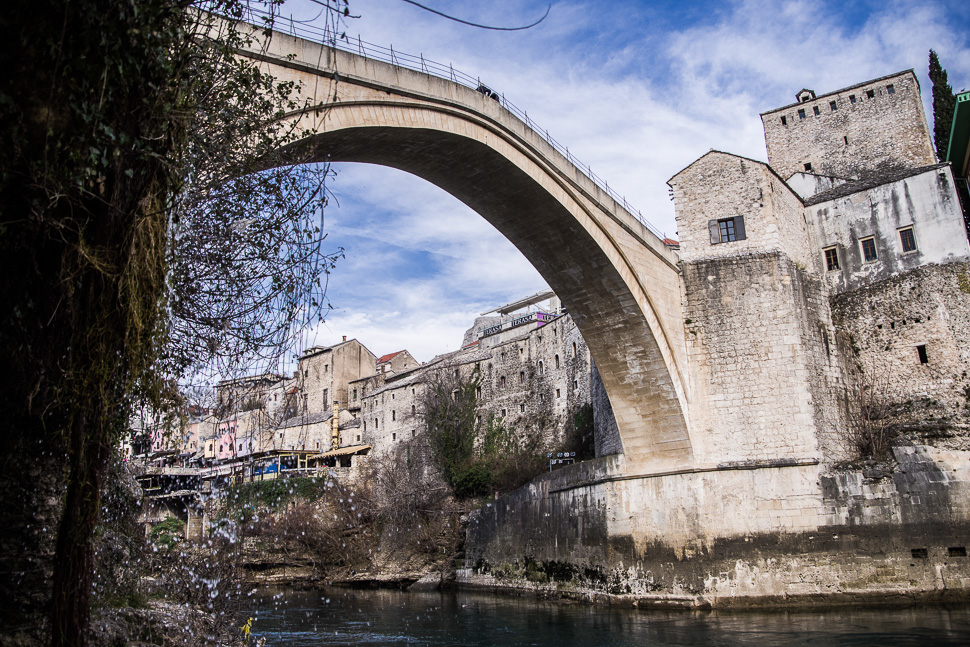 |
| Stari Most |
The Stari Most, which means Old Bridge, was considered an exemplary piece of Balkan Islamic architecture, commissioned by Suleiman the Magnificent in 1557. The Old Bridge stood for 427 years connecting the two sides of town over the river Neretva until it was destroyed in 1993 by Croat paramilitary forces during the Croat–Bosniak War. After the war it was reconstructed and opened again in 2004.
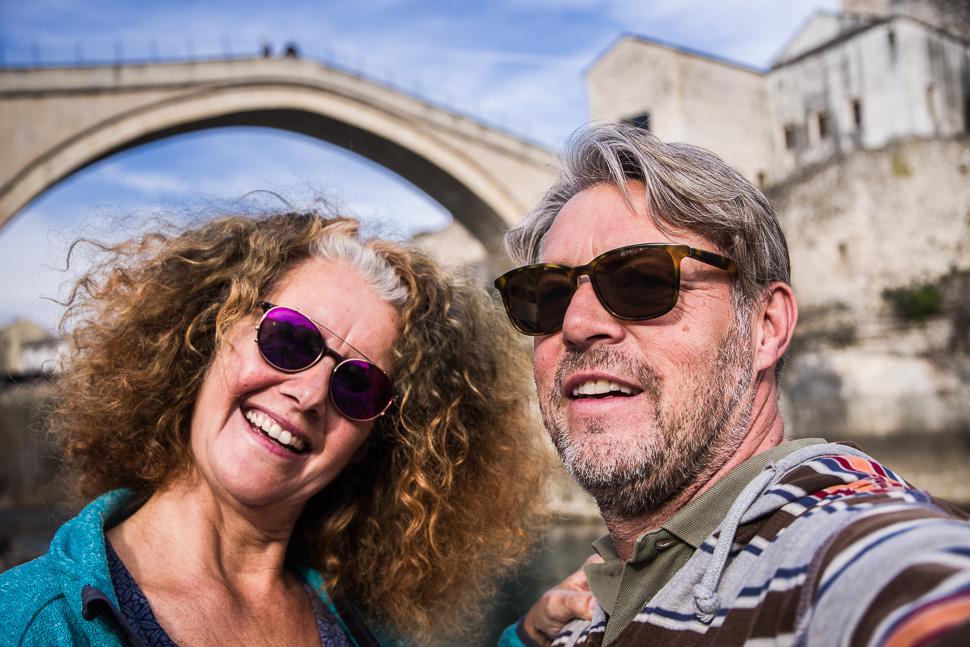 |
| Selfie Time! |
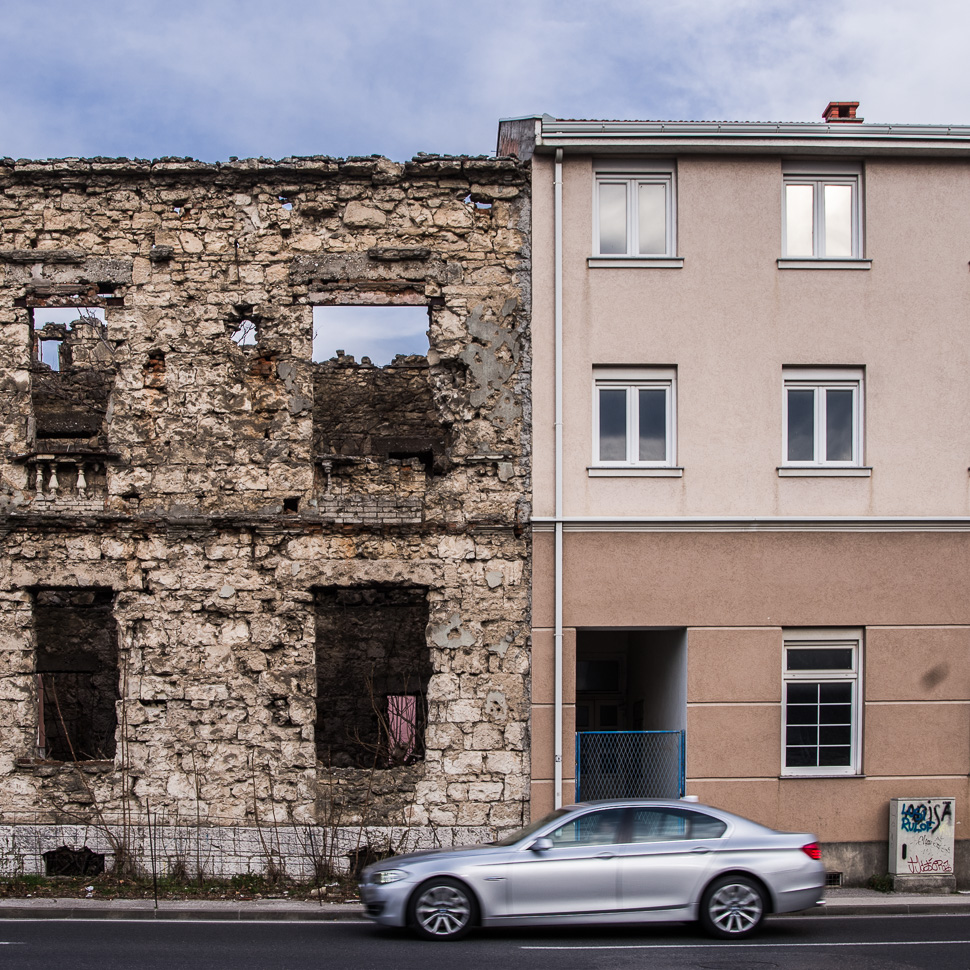 |
| Abandoned and restored are close together in Mostar |
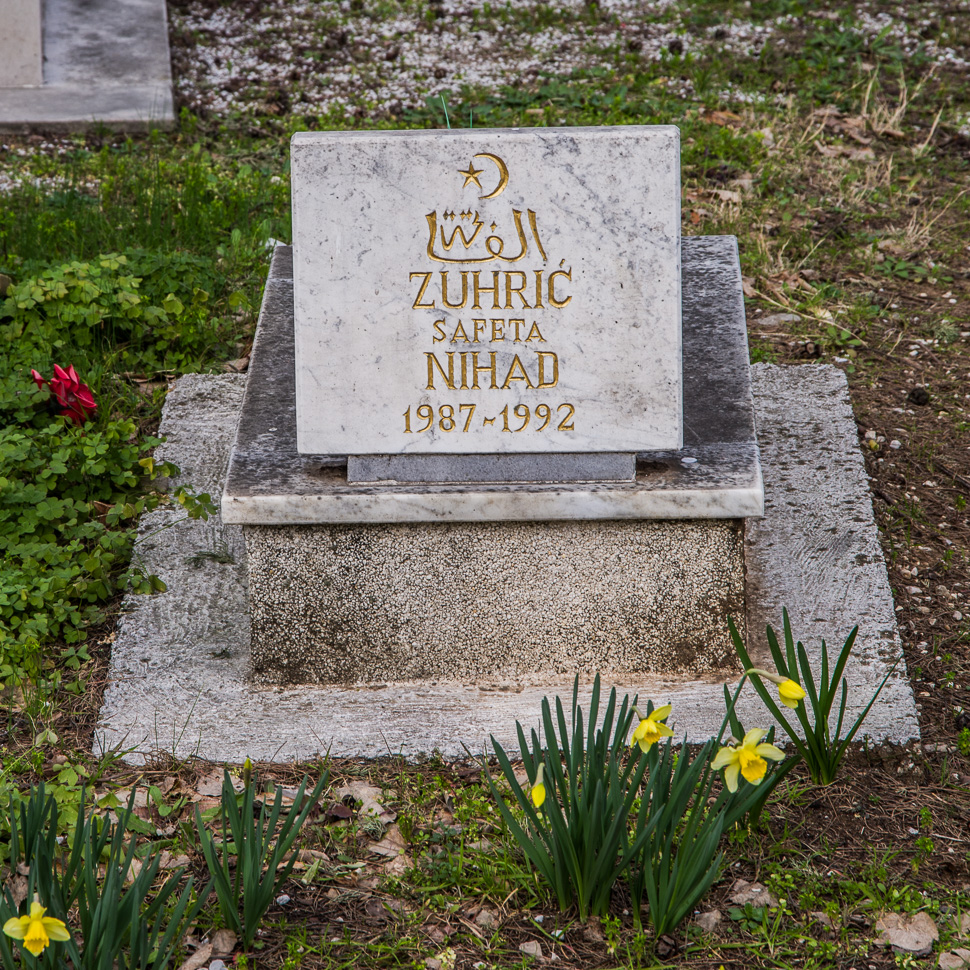 |
| We had parked next to a graveyard where everybody died in 1992 |
After our visit to Mostar we returned to the coast of Croatia where we found a lovely spot not far from the highway but at a river which would be nice for a dip in summer (43.481402,16.841049)
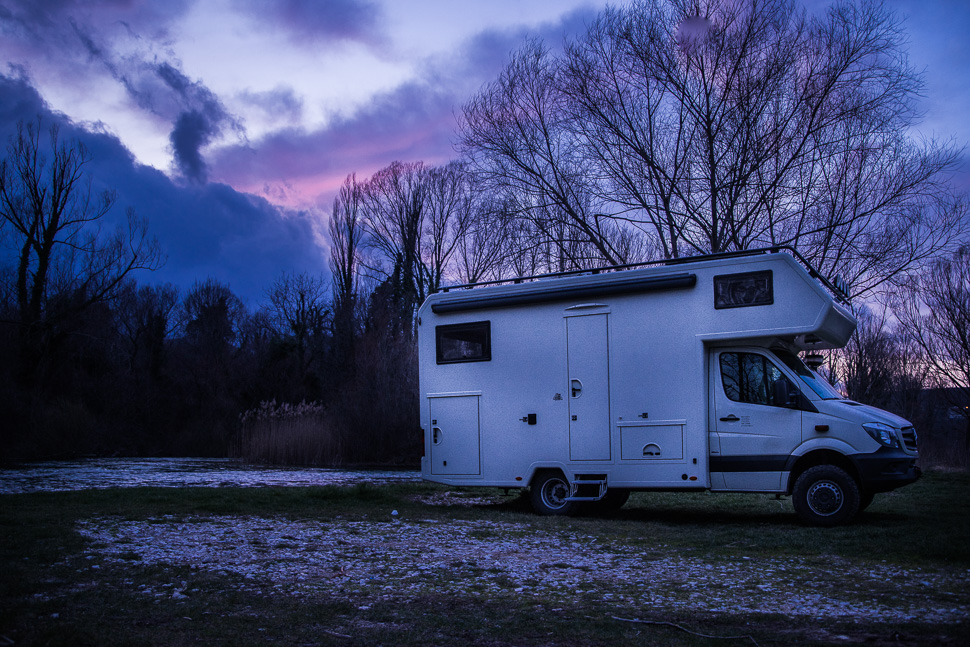 |
| Parking for the Night at a very nice river |
